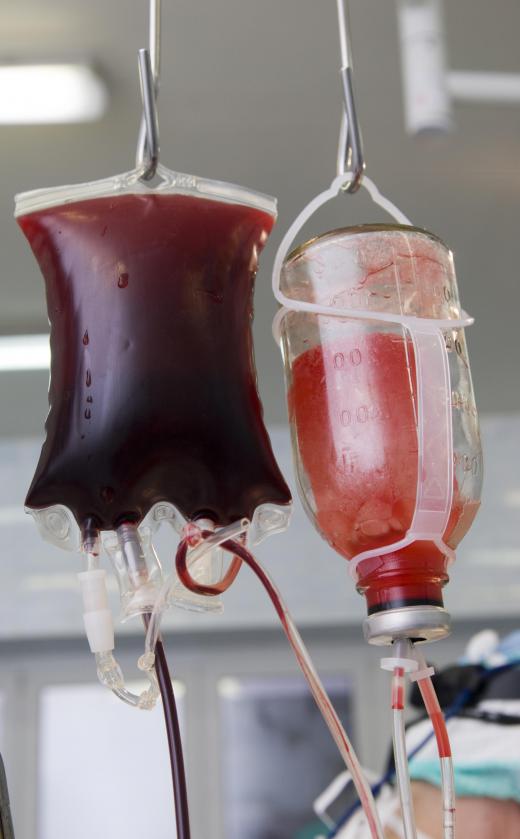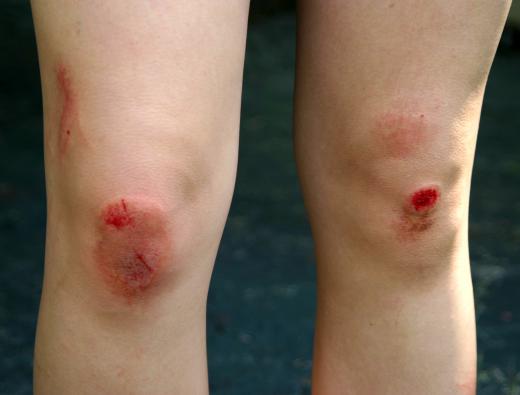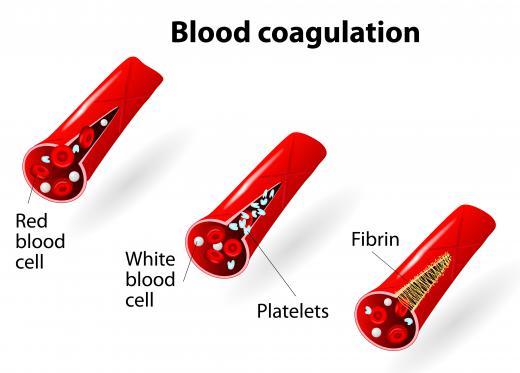What is Platelet Activation?
 Mary McMahon
Mary McMahon
Platelet activation is a series of cascading responses which allow blood platelets to react to an injury. Platelets could be thought of as one of the body's emergency response teams; when a cut or burn occurs, the body sends out a distress signal, and platelets are among the many specialized cells which flock to the site. In people with low platelet counts, it can be difficult to control bleeding because not enough platelets can be activated. By contrast, a high platelet count can lead to increased clotting, which can become a problem when platelet activation occurs.
The platelets are actually pieces of cells, derived from megakaryocytes produced in the bone marrow. In their unactivated state, platelets are roughly disc-shaped, and they float through the blood, circulating throughout the body so that they can respond quickly to an injury. The life of platelets in the blood is about eight to 10 days, and the body is constantly producing more, when someone is healthy, to replenish platelets which have been lost.

When the skin is broken, platelets are exposed to collagen, which causes them to activate. Platelet activation triggers the release of chemicals which cause additional platelets to activate. Activated platelets change shape, putting out fingers which cause them to take on a star shape. The platelets are also triggered to cluster and bind together, sealing the site of an injury to stop bleeding.

Below the surface of the skin, platelets coagulate during platelet activation, so that blood cannot flow out of a damaged vessel. Above the skin, they scab, forming a protective layer. In both cases, the platelets stop the bleeding and protect the body while it heals and rebuilds the injured area.
People are sometimes given transfusions of platelets when their blood platelets are low so that they have enough platelets for platelet activation to occur. In surgery, patients can receive both blood and platelets to compensate for blood loss and support the body during the surgery so that the patient will stay as strong as possible. Platelet levels can be measured in routine bloodwork, something which is usually ordered before surgery.

Individuals with platelet disorders may have reduced or elevated platelet levels. A variety of methods can be used to treat these disorders, depending on which condition a patient has. Some medications can also cause problems with platelets, and in some cases, may actually be used deliberately for this reason, most commonly in the case of medications which reduce platelet counts to prevent clotting in patients who are at risk of clots.
AS FEATURED ON:
AS FEATURED ON:
















Discuss this Article
Post your comments